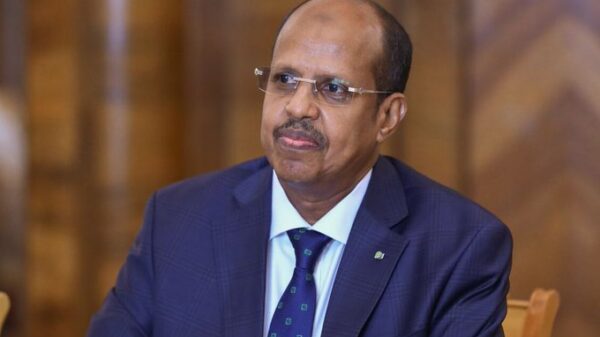NAIROBI, Kenya, Oct 17 – Little Alexandra Ajowi’s skin colour has changed from a smooth, light skin to a darker shade.
But her parents are not worried of the changes as such. This signifies that their four-year-old daughter is on the path to recovery.
Lexxie, as she is fondly called, is just back to the country from India where she underwent five courses of chemotherapy as treatment for Leukaemia. She also underwent a bone marrow transplant.
“She had diarrhoea, the skin, nails, palms and teeth turned black, her hair fell off, she was not eating, she was sleeping most of the time, no interest in anything, not talking, just actually lying there,” her mother Angela Mckigeyo recalls.
Lexxie started getting sickly with high fevers in November last year. She was first treated for a flu and then pneumonia.
“After one week of very strong antibiotics, she still had very high fevers and coughs and so we were all puzzled,” her mother remembers.
“But when they (doctors) looked at her blood picture, she had abnormal white blood cell count, abnormal red blood cell count and her haemoglobin count was low,” she says.
Lexxie’s mom recounts that when they consulted a haematologist, even they (haematologist) didn’t think that there was something major. They thought it was just an infection causing an abnormality in the blood picture.
But what was thought to be just an infection turned out to be acute leukaemia. At least 90 percent of Lexxie’s bone marrow had leukaemia cells.
“That was very devastating news, we didn’t expect it, we had discussed as a family many times, we did all other tests that would make her have low immunity, we did HIV tests. Everything was negative,” Angela remembers.
And that’s when Lexxie’s long journey to fight for her life began.
First they had to search for a marrow donor. The family and doctors were hoping that her six-year-old brother would be a match but after tests, that was not the case.
So they had to source elsewhere. By then, Lexxie was already admitted to a hospital in India.
“The hospital used the American registry. They found two matches – a New York blood centre and a living donor who was in a different state. I chose the code because of the urgency,” she says.
“If you have a living donor, you have to find them, may be they have already travelled, acquired some disease since they registered and you have to do so many tests and it takes about three to four months to find these people and actually get the marrow cells.”
Without the transplant, Lexxie had a 10 percent chance of survival but with the transplant it would go up to 60 percent.
“So it was either we come back and risk her having a relapse and losing her or to stay on and consider the transplant,” she says.
So they chose to stay on and save Lexxie’s life and there came the hardest part- raising the amount required.
“At the end of the chemotherapy, the first four cost us a total of about 50,000 dollars (Sh5 million), at the end of that basically all the money that we had was finished and the child was still sick and the transplant needed another almost 100,000 dollars (Sh10 million),” Angela recounts.
When the transplant was finally done, Lexxie kept on having relapses. One day she would be fine and the next she would be in the Intensive Care Unit. Her health had become unpredictable.
“We had come to treat and go back with a cured child but she still had leukaemia cells in her blood and beyond that she developed drug resistance,” her mother says.
It has cost the family nearly Sh20 million to try and save Lexxie’s life.
And they still have an outstanding Sh1.2 million bill with the New York blood centre for the marrow.
“The government has to subsidise cancer treatment whichever way you look at it. Even if you got donors to put up a transplant unit, for the patient you would still have to subsidise the cost,” she appeals.
“And you would have to think beyond what we do ordinarily with our blood banks and put up a registry because you don’t have to be paying 38,000 dollars (Sh3.8 million) to get a donor from New York. I am sure we have matchers here, it’s just that we don’t have a registry,” she says.
Although out of the hospital, Lexxie still has to fight for her life. The four-year-old child must take 24 tablets every day.
“They (doctors) say about six months after transplant which will be sometimes in December, they will reduce half of them (drugs) and then after another year, they should be able to stop all,” Angela says.
Lexxie’s diet is also strict and right now she is only feeding on boiled potatoes and noodles. All other foods are causing a reaction on her.
She also cannot go to school for the next two years to avoid infection.
“I am about to move her brother to another house,” Lexxie’s mother says jokingly.
She is also supposed to avoid anybody who is sick, everyone who gets into contact with her is supposed to be screened, household contacts need to be vaccinated and she is not supposed to mingle with crowds.
“Going outside is okay but she has to be in a mask and avoid crowds. Even trees are bad for her because they have pollen and we were actually advised to put an air conditioner and close all the windows,” Angela explains.















































